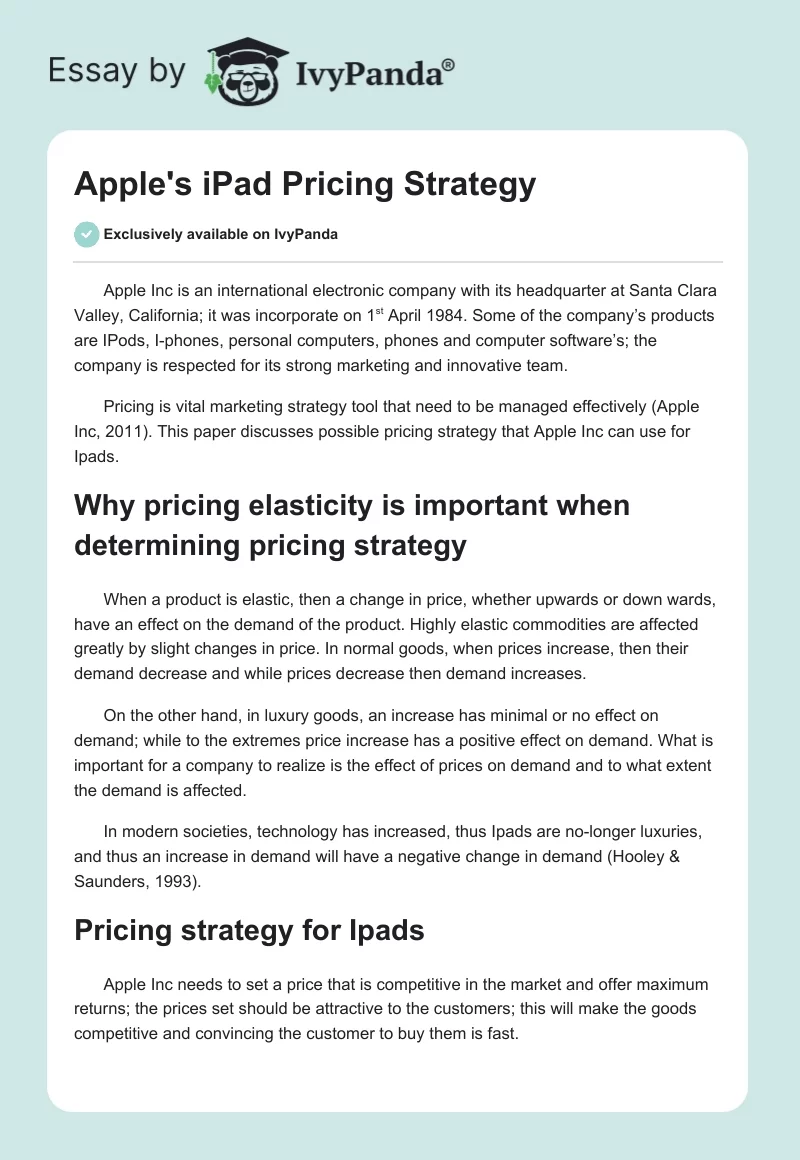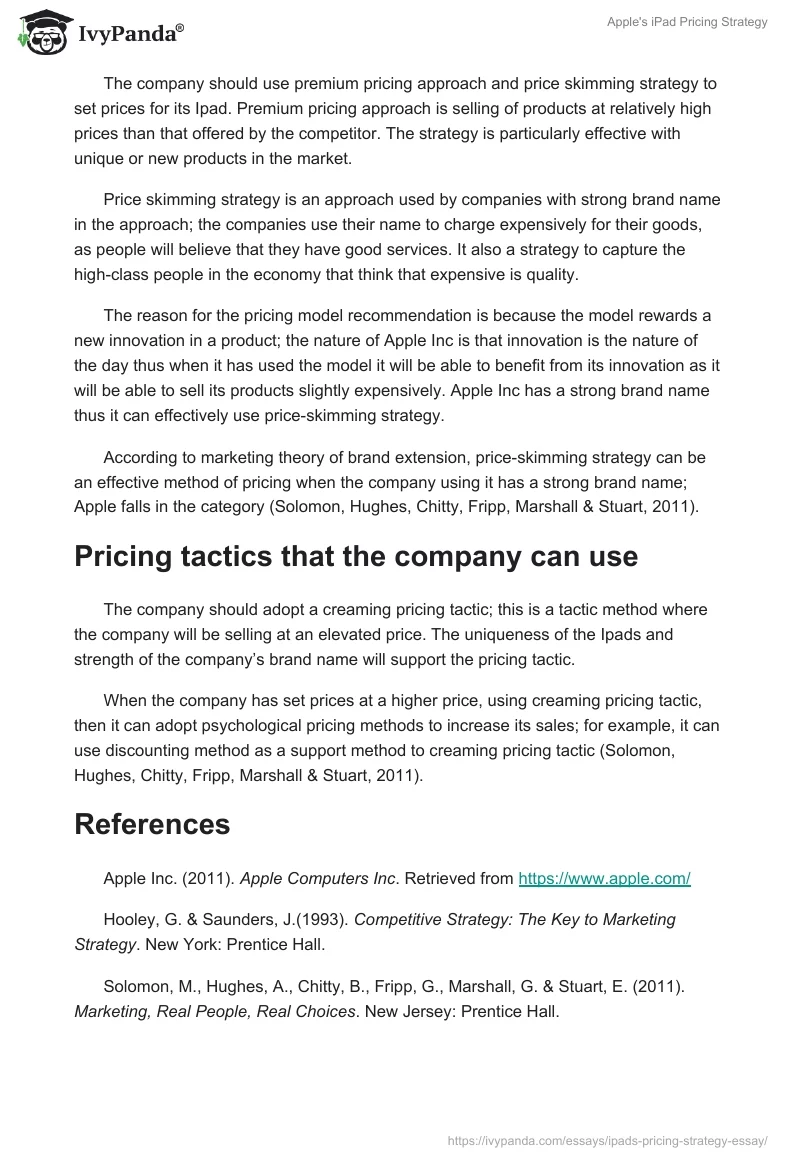Apple Inc is an international electronic company with its headquarter at Santa Clara Valley, California; it was incorporate on 1st April 1984. Some of the company’s products are IPods, I-phones, personal computers, phones and computer software’s; the company is respected for its strong marketing and innovative team.
Pricing is vital marketing strategy tool that need to be managed effectively (Apple Inc, 2011). This paper discusses possible pricing strategy that Apple Inc can use for Ipads.
Why pricing elasticity is important when determining pricing strategy
When a product is elastic, then a change in price, whether upwards or down wards, have an effect on the demand of the product. Highly elastic commodities are affected greatly by slight changes in price. In normal goods, when prices increase, then their demand decrease and while prices decrease then demand increases.
On the other hand, in luxury goods, an increase has minimal or no effect on demand; while to the extremes price increase has a positive effect on demand. What is important for a company to realize is the effect of prices on demand and to what extent the demand is affected.
In modern societies, technology has increased, thus Ipads are no-longer luxuries, and thus an increase in demand will have a negative change in demand (Hooley & Saunders, 1993).
Pricing strategy for Ipads
Apple Inc needs to set a price that is competitive in the market and offer maximum returns; the prices set should be attractive to the customers; this will make the goods competitive and convincing the customer to buy them is fast.
The company should use premium pricing approach and price skimming strategy to set prices for its Ipad. Premium pricing approach is selling of products at relatively high prices than that offered by the competitor. The strategy is particularly effective with unique or new products in the market.
Price skimming strategy is an approach used by companies with strong brand name in the approach; the companies use their name to charge expensively for their goods, as people will believe that they have good services. It also a strategy to capture the high-class people in the economy that think that expensive is quality.
The reason for the pricing model recommendation is because the model rewards a new innovation in a product; the nature of Apple Inc is that innovation is the nature of the day thus when it has used the model it will be able to benefit from its innovation as it will be able to sell its products slightly expensively. Apple Inc has a strong brand name thus it can effectively use price-skimming strategy.
According to marketing theory of brand extension, price-skimming strategy can be an effective method of pricing when the company using it has a strong brand name; Apple falls in the category (Solomon, Hughes, Chitty, Fripp, Marshall & Stuart, 2011).
Pricing tactics that the company can use
The company should adopt a creaming pricing tactic; this is a tactic method where the company will be selling at an elevated price. The uniqueness of the Ipads and strength of the company’s brand name will support the pricing tactic.
When the company has set prices at a higher price, using creaming pricing tactic, then it can adopt psychological pricing methods to increase its sales; for example, it can use discounting method as a support method to creaming pricing tactic (Solomon, Hughes, Chitty, Fripp, Marshall & Stuart, 2011).
References
Apple Inc. (2011). Apple Computers Inc. Retrieved from https://www.apple.com/
Hooley, G. & Saunders, J.(1993). Competitive Strategy: The Key to Marketing Strategy. New York: Prentice Hall.
Solomon, M., Hughes, A., Chitty, B., Fripp, G., Marshall, G. & Stuart, E. (2011). Marketing, Real People, Real Choices. New Jersey: Prentice Hall.


